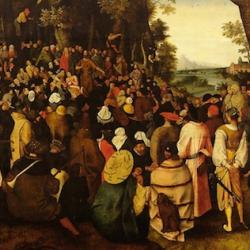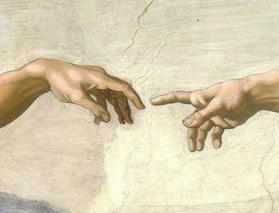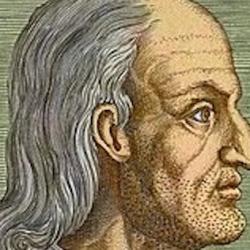Hans Boersma offers an extended critique of Radical Orthodoxy in the Fall 2006 issue of Pro Ecclesia. Boersma focuses on the issue of boundaries, arguing that Radical Orthodoxy’s ontology of peace is hostile to boundaries, seeing them as fluctuating and humanly constructed, and that this hostility to boundaries undermined RO’s claims to inherit the mantle of Augustine and also has serious ecclesiological and ethical consequences. Because RO acknowledges no fixed boundaries, neither can it acknowledge that there are publics other than the church. And the lack of boundaries also leads to an antinomian ethic that specifically manifests itself in RO’s sexual ethics and its somewhat ambivalent treatment of violence and coercion.
Boersma definitely scores some big points, particularly in his discussion of RO ethics and sexual ethics. And Boersma also shows that RO is not always as Augustinian as it claims to be. But several things leave me unconvinced by the overall thesis. First, I’m not sure that Milbank means his claim that “Christianity should not draw boundaries” as literally as Boersma seems to take it. In the same passage that Milbank makes this claim, he also says that “nothing really positive is excluded . . . but only the negative, that which denies and takes away from being: in other words, the violent.” This is problematic, but it also makes clear that there is a boundary of some sort – otherwise, how could one distinguish between the “really positive” that is not excluded and the “negative” that is? This is what Milbank appears to mean when he says that “there is no real exclusion here,” that is, excluding the “negative” doesn’t really count as an exclusion, just as excluding disease from the body doesn’t normally count as an exclusion. Boersma finds “a tension between Milbank’s ontology of peace and his oppositional logic,” but at least to some degree the tension seems to be of Boersma’s making – if Milbank’s ontology of peace is not as utterly hostile to boundaries as Boersma suggests, then the tension doesn’t exist.
Second, he begins with the claim that “Radical Orthodoxy works with a postmodern understanding of reality as human construct – its ‘ontology of peace’ – in which boundaries and identities are at the very least always in flux (perhaps even nonexistent) and always dependent on human powers of persuasion.” This is not the way I read Milbank’s claims about the “ontology of peace.” Fundamentally, this is a Trinitarian claim, namely, that the Creator lives in eternal, perfect harmony and love. Trinitarian theology means difference without conflict or violence, harmonious difference. And that means that violence is not built into the creation of this Creator; evil is an intrusion into a good world. God certainly is not a human construct, and so the ontology of peace is a claim about the way the world actually is.
Third, Boersma examines RO’s use of the two-city theme, and makes the plausible argument that RO has immanentized the civitas Dei that is a transcendent and eschatological reality in Augustine. One consequence, he says, is that RO doesn’t acknowledge the existence of any publics other than the church: “For Radical Orthodoxy, the Church is the ONLY public, and hence the ONLY authentic polis. The result is confusion between the CENTRALITY of the Church (a helpful category) and the MONOPOLY of the Church (a far less innocuous notion).” Boersma cites Bell and Milbank to the effect that the church must refuse “politics as statecraft” and that salvation involves “‘liberation’ from political, economic, and psychic dominium and therefore from all structures belonging to the saeculum.” Perhaps I’m importing my own politics into RO, but there seems to be an equivocation here. To say that the church is the only “authentic” polis doesn’t necessarily imply that there is no political reality of any sort outside the church. It means that the nature of a public comes to its most genuine expression in the church. It’s not clear how RO could pose the church as a counter-polity without recognizing some kind of analogy between the polities outside the church and that within.
I’m not even sure that Milbank means what Boersma says he means: Salvation as liberation from the structures of dominium does not mean that salvation involves withdrawal from contact with or interaction with those structures. It means that Christians who have to engage with the world and its structures will not operate according to the patterns, methods, goals of those structures. Ultimately, eschatologically, certainly salvation DOES mean quite literally liberation from the saeculum and its dominium, because the saeculum is (by Milbank’s definition if not Augustine’s) the sub-eschatological order. I suspect Milbank means simply to say that Christians are called to live eschatologically within the sub-eschatological saeculum.
These reservations don’t undermine the value of Boersma’s critique. As I said, he presents some important challenges to RO at various points and the article as a whole is well worth careful reading.














